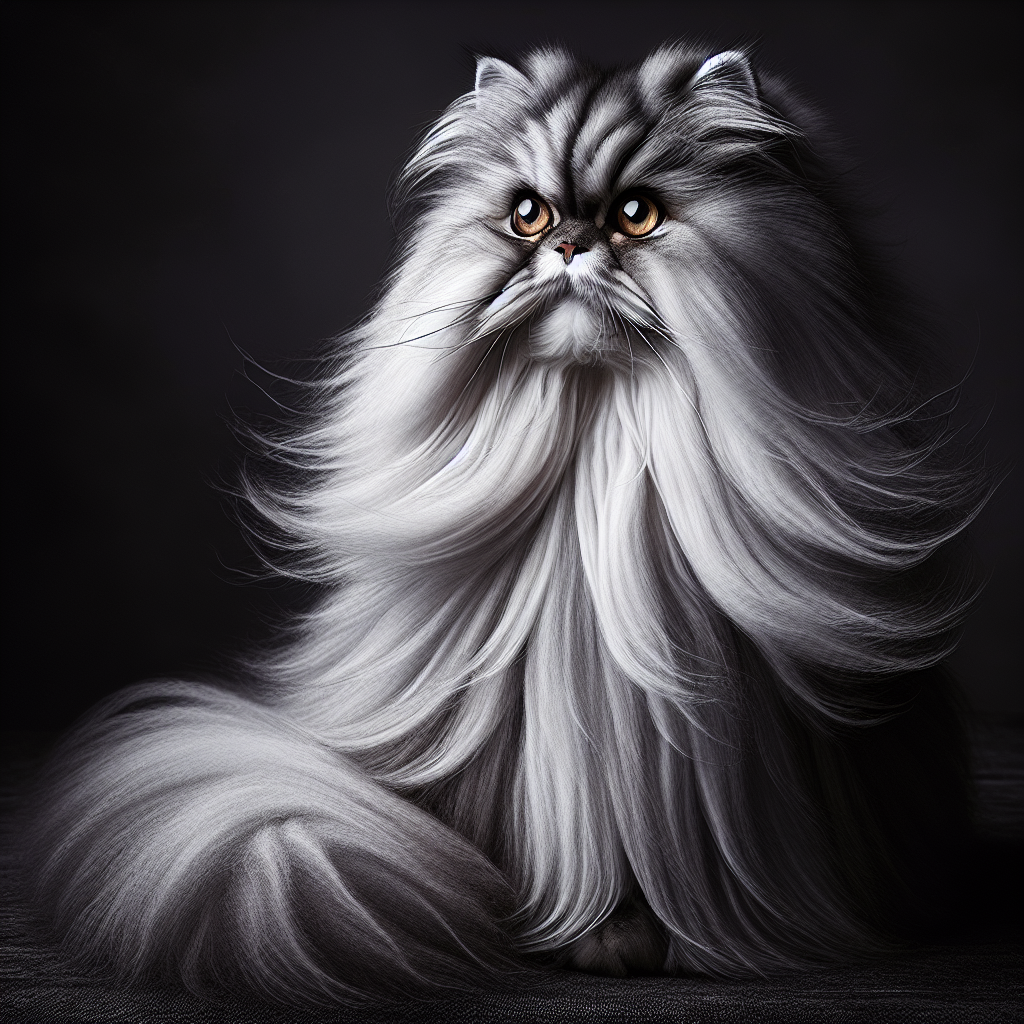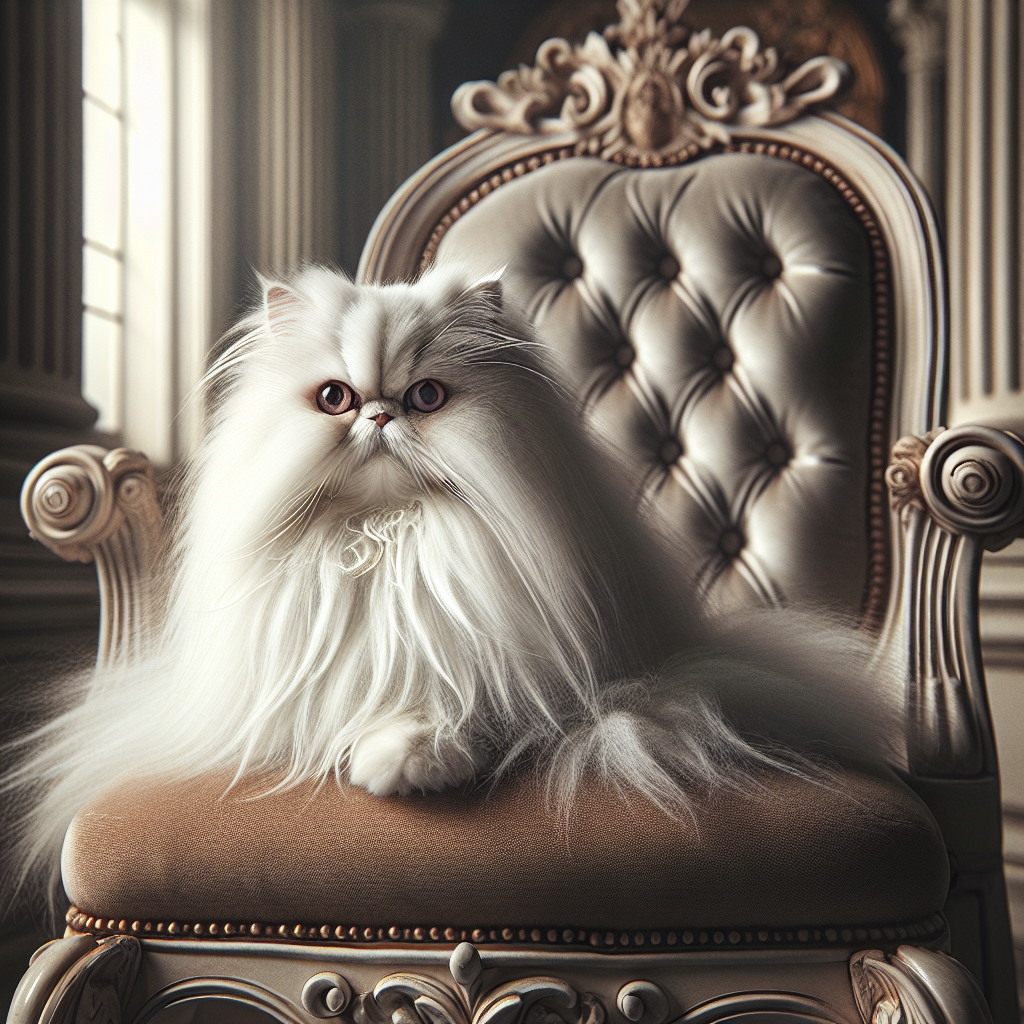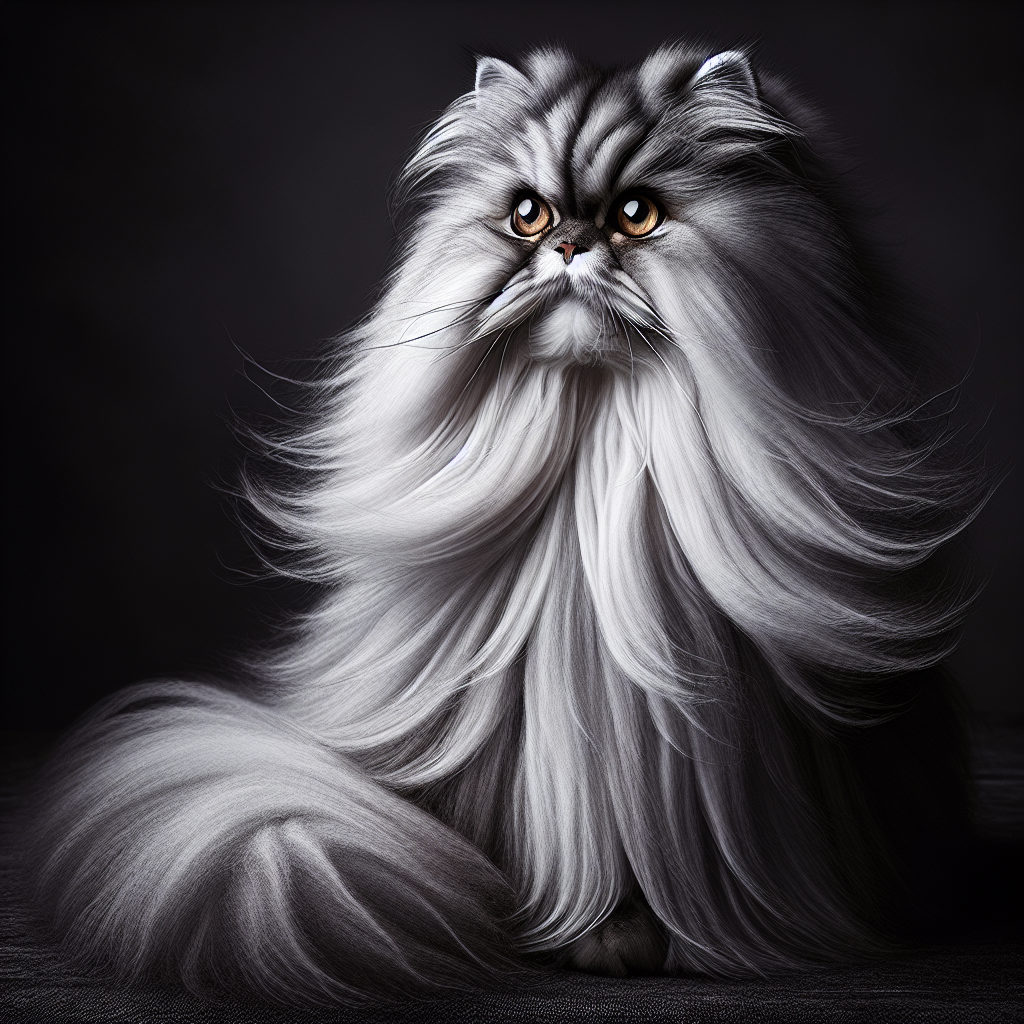Imagine walking into a pet store and being instantly captivated by the luxurious and enchanting presence of a Persian cat. With its luscious coat and majestic aura, you can’t help but wonder, what is the price of a Persian cat? This article explores the captivating world of Persian cats, shedding light on their charm and revealing the factors that contribute to their price. From their distinct breed qualities to the expenses incurred during their upbringing, discover the true price of welcoming one of these majestic felines into your home.
Factors Affecting the Price of a Persian Cat
Breed Quality
The quality of the Persian cat breed plays a significant role in determining its price. Cats that conform closely to the breed standard set by organizations such as the Cat Fanciers’ Association (CFA) or The International Cat Association (TICA) are generally considered to be of higher quality. These cats often have desirable traits, including a round head, small ears, and a thick, luxurious coat. The closer a Persian cat is to meeting these breed standards, the higher its price is likely to be.
Pedigree and Bloodline
The pedigree and bloodline of a Persian cat can also impact its price. Cats with well-documented pedigrees and prestigious bloodlines tend to have higher price tags. This is because they come from a long line of cats with impressive show records or lineage that can be traced back several generations. Buyers who are interested in participating in cat shows or breeding may be willing to pay a premium for a Persian cat with an exceptional pedigree.
Age of the Cat
The age of a Persian cat can also influence its price. Kittens are often more expensive than adult cats as they require more care and attention during the early stages of their lives. Furthermore, older cats may be more difficult to find and come with a lower price. Some pet owners might prefer to adopt older cats, which can result in a lower demand for kittens and subsequently, a lower price for them.
Gender of the Cat
Gender can contribute to the price of a Persian cat. Female cats, particularly those that are not spayed, are typically more expensive than males. This is because female cats can be used for breeding purposes, adding value to their individual cost. However, it’s essential to note that pricing variations due to gender are not always significant and can vary depending on factors such as geographical location and breeding intentions.
Coat Color and Pattern
The coat color and pattern of a Persian cat can also impact its price. Certain colors and patterns are more desirable and sought after, leading to a higher price. For example, Persian cats with rare and unique coat colors, such as solid white, chocolate, or lilac, tend to be pricier than those with more common colors like black or gray. Cats with distinct coat patterns, such as calico or tortoiseshell, can also command higher prices due to their visual appeal.
Physical Characteristics
Physical characteristics, such as facial structure and body type, can affect the price of a Persian cat. Cats with exaggerated facial features, including a flat face and a prominent nose, are often more expensive than cats with a more traditional Persian appearance. Additionally, Persian cats with a stocky, cobby body type may be priced higher than those with a more slender build. These physical traits are highly sought after by some buyers, which drives up the price.
Health and Vaccination
The overall health of a Persian cat and its vaccination history can also influence its price. Cats that have been regularly vaccinated and are in good health are often priced higher due to the assurance they bring to potential buyers. Conversely, cats with health issues or a lack of essential vaccinations may have a lower price as potential owners may need to invest more in their care and veterinary services.
Location and Availability
The location and availability of Persian cats can vary in different regions, which can affect their price. In areas where Persian cats are more prevalent, prices may be lower due to a higher supply and competition among breeders. Conversely, in areas where Persian cats are rarer or not readily available, prices may be higher due to limited availability. Factors like shipping costs and transportation logistics can also impact the final price of a Persian cat.
Breeder Reputation
The reputation of the breeder can be a significant factor in determining the price of a Persian cat. Established breeders with a strong reputation for producing healthy, well-socialized kittens will often charge a premium for their cats. This is because their cats are usually in high demand due to the breeder’s track record of producing quality animals. Buyers often perceive purchasing from reputable breeders as a way to ensure the health and temperament of their new pet.
Demand and Popularity
Like any other product, the price of a Persian cat is influenced by the demands and popularity of the breed. If Persian cats are currently in high demand, prices are likely to be higher. Popularity can be driven by various factors, such as media exposure, celebrity ownership, or trends in cat breeds. It’s important for potential buyers to consider the impact of demand and popularity on the price of Persian cats and evaluate if they are willing to pay the premium associated with their desired pet.
Range of Persian Cat Prices
Pet Quality Cats
Pet quality Persian cats are typically priced lower than cats of breeder or show quality. These cats have traits or characteristics that deviate slightly from the breed standards, making them unsuitable for shows or breeding purposes. However, they still make excellent companions and pets for families looking for a Persian cat to love and care for. The price range for pet quality Persian cats can vary depending on factors such as age, gender, coat color, and the reputation of the breeder.
Breeder Quality Cats
Breeder quality Persian cats are priced higher compared to pet quality cats. These cats possess desirable traits and characteristics that align closely with the breed standards. Breeders often look for cats with exceptional lineage, physical attributes, and overall health to ensure the quality of their future litters. Purchasing a breeder quality Persian cat allows potential breeders to continue improving the breed and potentially participate in cat shows or breeding programs.
Show Quality Cats
Show quality Persian cats are the most expensive among the three categories. These cats meet the highest standards of the breed and often come from prestigious bloodlines. They possess the ideal physical characteristics, coat quality, and temperament required for success in cat shows. Show quality Persian cats are primarily sought after by dedicated breeders and individuals who aspire to compete and showcase their cats in the competitive world of cat shows.

Cost Breakdown
Purchase Price
The purchase price of a Persian cat is the initial cost paid to acquire the cat from a breeder or other source. This price can vary greatly depending on factors such as breed quality, pedigree, age, gender, coat color, and the reputation of the breeder. Potential buyers should thoroughly research and consider their preferences to ensure they find a Persian cat that fits both their budget and their desired traits.
Initial Expenses
Beyond the purchase price, there are several initial expenses to consider when bringing home a Persian cat. These can include microchipping, initial vaccinations, deworming, a litter box, bedding, toys, scratching posts, and other necessary supplies. Initial expenses are essential for providing a comfortable and safe environment for the new addition to the family. Buyers should budget accordingly to ensure they can provide for their Persian cat’s needs from the very beginning.
Ongoing Expenses
Owning a Persian cat involves ongoing expenses, including food, litter, grooming supplies, annual vaccinations, regular veterinary check-ups, and potential emergency medical care. The cost of these ongoing expenses can vary depending on factors such as the cat’s age, size, dietary needs, and any health conditions that may require additional care. Budgeting for these ongoing expenses is crucial to ensure the well-being and overall care of the Persian cat throughout its life.
Additional Expenses
Veterinary Care
Regular veterinary care is necessary to keep your Persian cat healthy and happy. This includes annual vaccinations, routine check-ups, and preventive treatments for fleas, ticks, and parasites. Additionally, unexpected vet visits might be required for illnesses or injuries. The cost of veterinary care can vary depending on factors such as geographical location, the overall health of the cat, and any additional tests or treatments required.
Grooming
Grooming is a crucial aspect of caring for a Persian cat due to their long and luxurious coat. Regular brushing, bathing, nail trimming, and ear cleaning are necessary to keep their coat clean and tangle-free. Some owners choose to visit professional groomers to ensure their cat’s coat remains in optimal condition. The cost of grooming services depends on the geographical location, the specific services requested, and the overall condition of the cat’s coat.
Food and Supplies
Persian cats have specific dietary needs, including high-quality cat food that supports their overall health and addresses any breed-specific concerns. Additionally, supplies such as litter, litter boxes, food bowls, water bowls, and scratching posts are necessary for their daily care. The cost of food and supplies can vary depending on factors such as the quality of the products, the size and age of the cat, and the preferences of the owner.
Training and Socializing
Training and socializing expenses may vary depending on the individual needs of the Persian cat. While cats are generally independent animals, some may benefit from training to address behavioral issues or to learn basic commands. Owners may also choose to enroll their cats in socialization classes to help them feel comfortable in various environments and around other animals. The cost of training and socializing services can vary depending on the specific programs chosen and the training methods utilized.

Potential Savings
Adopting from a Shelter
One way to save on the cost of acquiring a Persian cat is by adopting from a local animal shelter or rescue organization. Shelters often have cats of various breeds, including Persians, that are in need of loving homes. Adoption fees are generally lower than purchasing from breeders, and many shelters provide basic veterinary care, vaccinations, and spaying or neutering services as part of the adoption process. By adopting, you not only save on expenses but also provide a forever home for a cat in need.
Rescue Organizations
Rescue organizations dedicated to specific breeds, including Persian cats, can also be a cost-effective option. These organizations rescue cats from various situations and provide them with the necessary care before finding them suitable forever homes. While adoption fees from rescue organizations may still be involved, they are typically lower than those from breeders and may include some initial veterinary care.
Breed Specific Rescue Groups
For individuals looking for a Persian cat specifically, breed-specific rescue groups can offer an affordable option. These groups focus on rescuing and rehoming cats of a specific breed, ensuring they end up in appropriate and loving homes. Adoption fees from breed-specific rescue groups may be higher than those from shelters, but they often include more comprehensive veterinary care and screening to provide potential owners with peace of mind.
Avoiding Scams and Unethical Practices
Research and Education
To avoid falling victim to scams and unethical practices related to Persian cat purchases, it’s essential to conduct thorough research and educate yourself about the breed, reputable breeders, and common warning signs. Understanding the typical price range for Persian cats and having realistic expectations can help you identify and avoid suspicious or overpriced offers.
Choosing a Reputable Breeder
When purchasing a Persian cat from a breeder, it’s crucial to choose a reputable breeder who prioritizes the health and welfare of their cats. Researching breeders, reading reviews, and asking detailed questions about their breeding practices and the cats’ lineage can help ensure you are working with an ethical and responsible breeder. Visiting the breeder’s facility in person, if possible, can provide further insights into their operations and the conditions in which the cats are raised.
Beware of Online Marketplaces
While online marketplaces can provide a convenient platform to search for Persian cats, it’s important to exercise caution and be aware of potential risks. Scammers may exploit the anonymity of online platforms, misrepresenting cats or using deceptive tactics to persuade buyers into making hasty decisions. Avoid sending money to sellers without proper verification and conduct thorough research to verify their credibility before proceeding with a purchase.
Common Misconceptions about Persian Cat Prices
Persian Cats Are Always Expensive
While Persian cats are generally priced higher compared to some other cat breeds, not all Persian cats come with exorbitant price tags. Factors such as age, coat color, breed quality, and availability can all influence the price. By considering the various factors and exploring different sources, potential owners may find Persian cats that fit their budget and offer the companionship they desire.
Lower Price Means Lower Quality
While it’s true that some lower-priced Persian cats may not conform closely to breed standards, it does not necessarily mean they are of lower quality. Some Persian cats with minor deviations from the breed standard can still make wonderful companions. The most important consideration should be the overall health, temperament, and compatibility with your lifestyle, rather than solely focusing on meeting specific show or breeding criteria.
High Price Guarantees Better Health or Temperament
Although high-priced Persian cats often come from reputable breeders and have desirable traits, price alone is not a guarantee of better health or temperament. It is essential to remember that while breeders strive to produce healthy cats, individual cats’ health and temperament can still vary. Regardless of the price, potential owners should prioritize thorough research, health screenings, and spending time with the cat before making a final decision.
Conclusion
The price of a Persian cat is influenced by various factors, including breed quality, pedigree, age, gender, coat color, physical characteristics, health, location, breeder reputation, and demand. Different categories, such as pet quality, breeder quality, and show quality, offer cats at varied price points. Beyond the initial purchase price, owning a Persian cat involves ongoing expenses for veterinary care, grooming, food, supplies, and potentially training and socializing. Potential owners can also explore cost-saving options, such as adoption from shelters or rescue organizations. To avoid scams and unethical practices, thorough research, choosing reputable breeders, and being cautious when engaging in online purchases are essential. Finally, it’s essential to dispel common misconceptions about Persian cat prices, such as assuming all Persian cats are expensive or that a higher price guarantees better health or temperament. By considering all these factors and making informed decisions, potential owners can find their perfect Persian cat within their desired budget.

